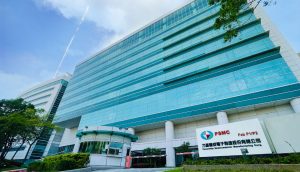Popular Keywords
- About Us
-
Research Report
Research Directory
Semiconductors
LED
Consumer Electronics
Emerging Technologies
- Selected Topics
- Membership
- Price Trends
- Press Center
- News
- Events
- Contact Us
News

Powerchip Semiconductor Manufacturing Corporation (PSMC) held the inauguration ceremony for its new Tongluo plant on May 2nd. This investment project, totaling over NTD 300 billion for a 12-inch fab, has completed the installation of its initial equipment and commenced trial production. According ...
News

The demand for AI computing power is skyrocketing, with advanced packaging capacity becoming key. As per a report from Commercial Times citing industry sources, it has pointed out that TSMC is focusing on the growth potential of advanced packaging. Southern Taiwan Science Park, Central Taiwan Sci...
News

In a bid to catch up with leading players like TSMC, the South Korean government is said to have approved a national-level initiative aimed at actively promoting the development of advanced chip packaging technologies, according to a report from South Korean media outlet TheElec. Citing anonymou...
News

Per a report from TechNews, during Intel's earnings call last week, CEO Pat Gelsinger stated that the supply of Core Ultra processors in the second quarter is limited due to insufficient wafer-level assembly capacity. Gelsinger mentioned in the meeting that with the increasing demand for AI PCs ...
News

Amid NVIDIA's leadership in the AI wave, demand for CoWoS (Chip-on-Wafer-on-Substrate) has tripled, driving TSMC to aggressively expand CoWoS capacity, with a corresponding surge in demand for System-in-Integrated-Circuit (SoIC) solutions. According to a report from MoneyDJ citing industry source...